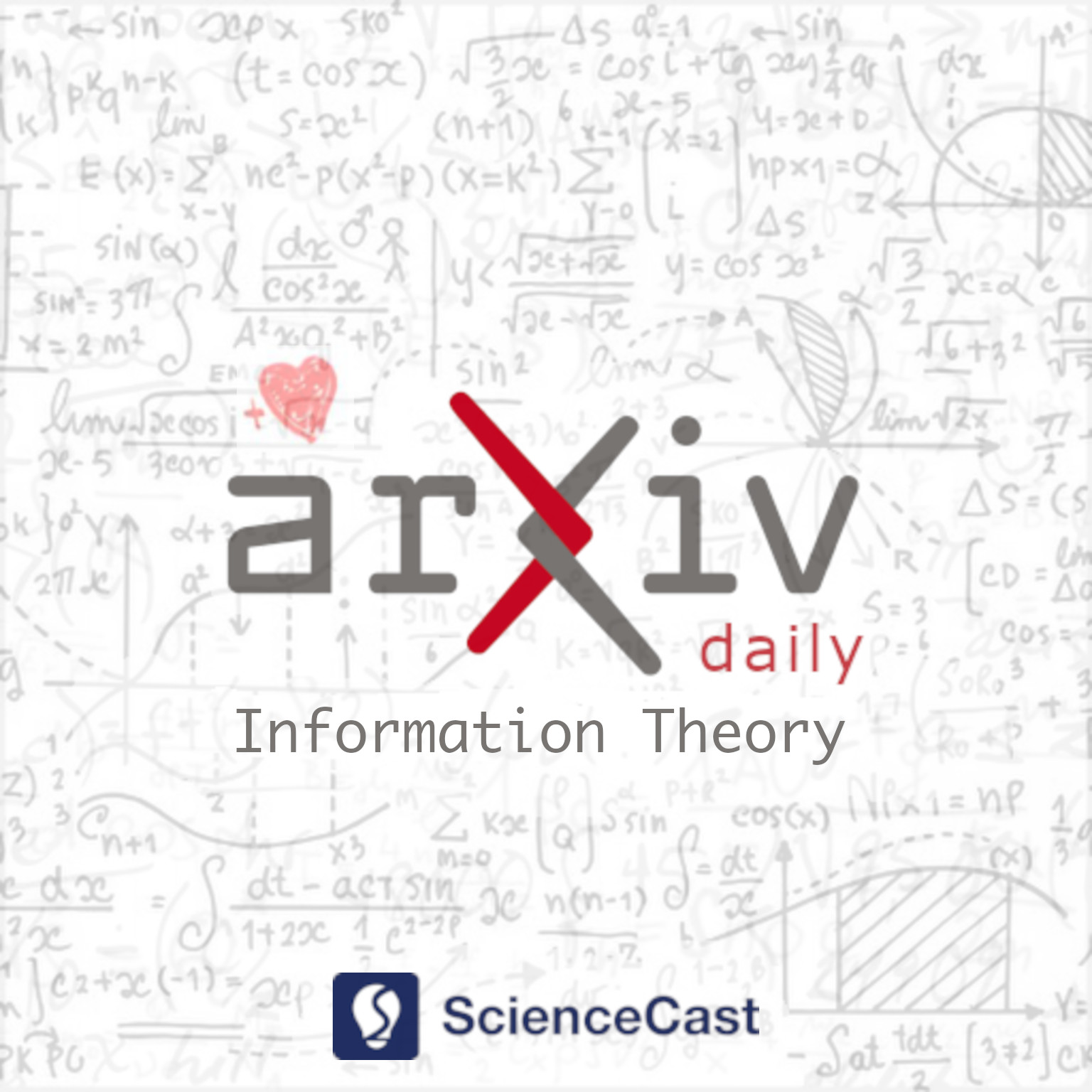
Information Theory (cs.IT)
Fri, 11 Aug 2023
1.Embracing Errors is More Efficient than Avoiding Them through Constrained Coding for DNA Data Storage
Authors:Franziska Weindel, Andreas L. Gimpel, Robert N. Grass, Reinhard Heckel
Abstract: DNA is an attractive medium for digital data storage. When data is stored on DNA, errors occur, which makes error-correcting coding techniques critical for reliable DNA data storage. To reduce the number of errors, a common technique is to include constraints that avoid homopolymers (consecutive repeated nucleotides) and balance the GC content, as sequences with homopolymers and unbalanced GC contents are often associated with larger error rates. However, constrained coding comes at the cost of an increase in redundancy. An alternative (unconstrained coding) is to control the errors by randomizing the sequences, embracing errors, and paying for them with additional coding redundancy. In this paper, we determine the error regimes in which embracing errors is more efficient than constrained coding. We find that constrained coding is inefficient in most common error regimes for DNA data storage. Specifically, the error probabilities for nucleotides in homopolymers and in sequences with unbalanced GC contents must be very large for constrained coding to achieve a higher code rate than unconstrained coding.
2.RIS-Assisted 6G Wireless Communications: A Novel Statistical Framework in the Presence of Direct Channel
Authors:Soumya P. Dash, Aryan Kaushik
Abstract: A RIS-assisted wireless communication system in the presence of a direct communication path between the transceiver pair is considered in this paper. The transmitter-RIS and the RIS-receiver channels follow independent Nakagami-m distributions, and the direct channel between the transceiver pair follows a Rayleigh distribution. Considering this system model, the statistics of the composite channel for the RIS-assisted communication system are derived in terms of obtaining novel expressions for the probability density functions for the magnitude and the phase of the communication channel. The correctness of the analytical framework is verified via Monte Carlo simulations, and the effects of the shape parameters of the channels and the number of reflecting elements in the RIS on the randomness of the composite channel are studied via numerical results.
3.Large Language Models for Telecom: Forthcoming Impact on the Industry
Authors:Ali Maatouk, Nicola Piovesan, Fadhel Ayed, Antonio De Domenico, Merouane Debbah
Abstract: Large Language Models (LLMs) have emerged as a transformative force, revolutionizing numerous fields well beyond the conventional domain of Natural Language Processing (NLP) and garnering unprecedented attention. As LLM technology continues to progress, the telecom industry is facing the prospect of its potential impact on its landscape. To elucidate these implications, we delve into the inner workings of LLMs, providing insights into their current capabilities and limitations. We also examine the use cases that can be readily implemented in the telecom industry, streamlining numerous tasks that currently hinder operational efficiency and demand significant manpower and engineering expertise. Furthermore, we uncover essential research directions that deal with the distinctive challenges of utilizing the LLMs within the telecom domain. Addressing these challenges represents a significant stride towards fully harnessing the potential of LLMs and unlocking their capabilities to the fullest extent within the telecom domain.
4.Age of Incorrect Information in Random Access Channels without Feedback
Authors:Andrea Munari
Abstract: We focus on a system in which a set of two-state Markov sources report status update to a common receiver over a shared wireless channel. Inspired by practical IoT networks, we consider three variations of ALOHA as medium access protocol: i) a random approach in which a source transmits regardless of its status, ii) a reactive scheme in which updates are sent only when a source changes state, and iii) a hybrid solution which blends the two possibilities. We consider different criteria to capture the ability of the receiver to maintain an accurate perception of the tracked processes: average age of incorrect information (AoII), probability of missed detection (i.e., of not detecting a source transition), and average duration of intervals over which the receiver lingers with erroneous knowledge. We provide closed form analytical expressions for all the metrics, highlighting non-trivial trade-offs and providing useful protocol design hints.
5.Joint Beamforming Optimization for Active STAR-RIS Assisted ISAC systems
Authors:Shuang Zhang, Wanming Hao, Gangcan Sun, Chongwen Huang, Zhengyu Zhu, Xingwang Li, Chau Yuen
Abstract: In this paper, we investigate an active simultaneously transmitting and reflecting reconfigurable intelligent surface (STAR-RIS) assisted integrated sensing and communications (ISAC) system, in which a dual-function base station (DFBS) equipped with multiple antennas provides communication services for multiple users with the assistance of an active STARRIS and performs target sensing simultaneously. Through optimizing both the DFBS and STAR-RIS beamforming jointly under different work modes, our purpose is to achieve the maximized communication sum rate, subject to the minimum radar signal-to-noise ratio (SNR) constraint, active STAR-RIS hardware constraints, and total power constraint of DFBS and active STAR-RIS. To solve the non-convex optimization problem formulated, an efficient alternating optimization algorithm is proposed. Specifically, the fractional programming scheme is first leveraged to turn the original problem into a structure with more tractable, and subsequently the transformed problem is decomposed into multiple sub-problems. Next, we develop a derivation method to obtain the closed expression of the radar receiving beamforming, and then the DFBS transmit beamforming is optimized under the radar SNR requirement and total power constraint. After that, the active STAR-RIS reflection and transmission beamforming are optimized by majorization minimiation, complex circle manifold and convex optimization techniques. Finally, the proposed schemes are conducted through numerical simulations to show their benefits and efficiency.